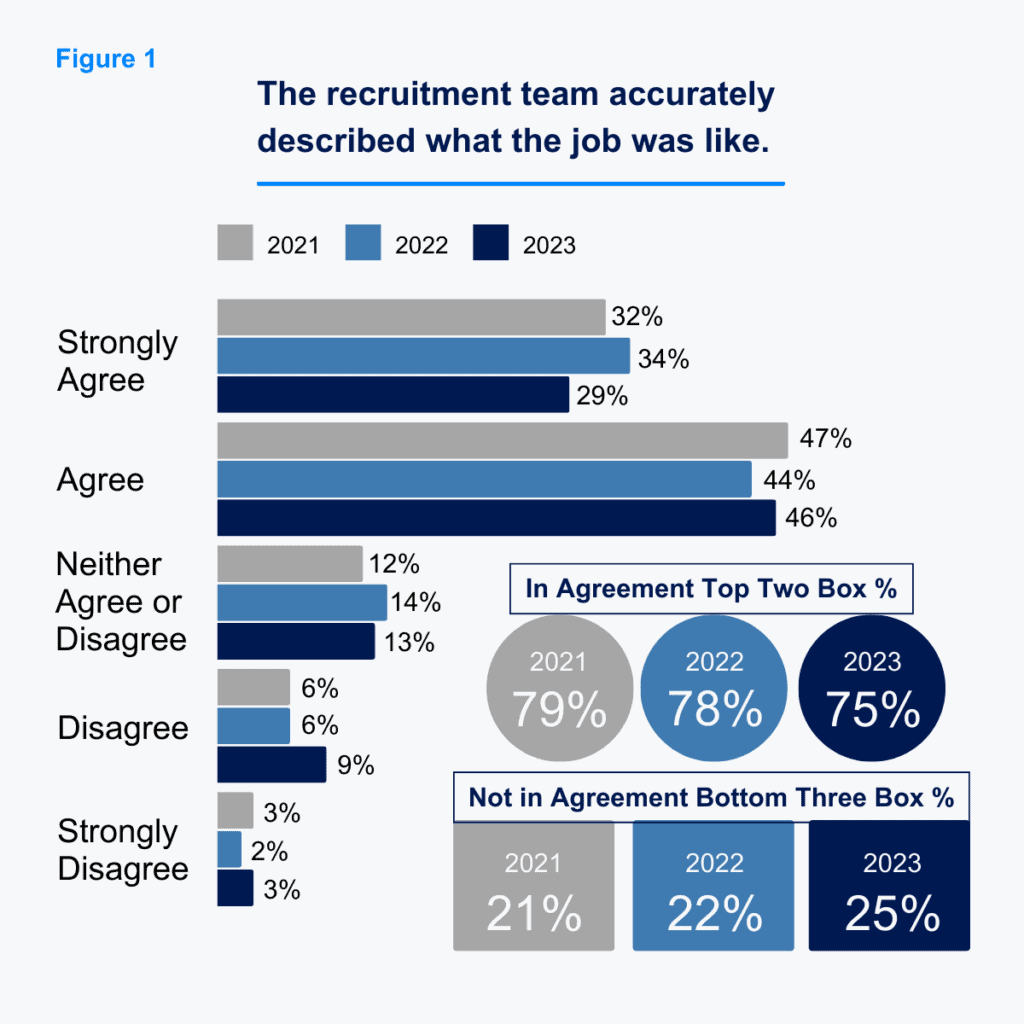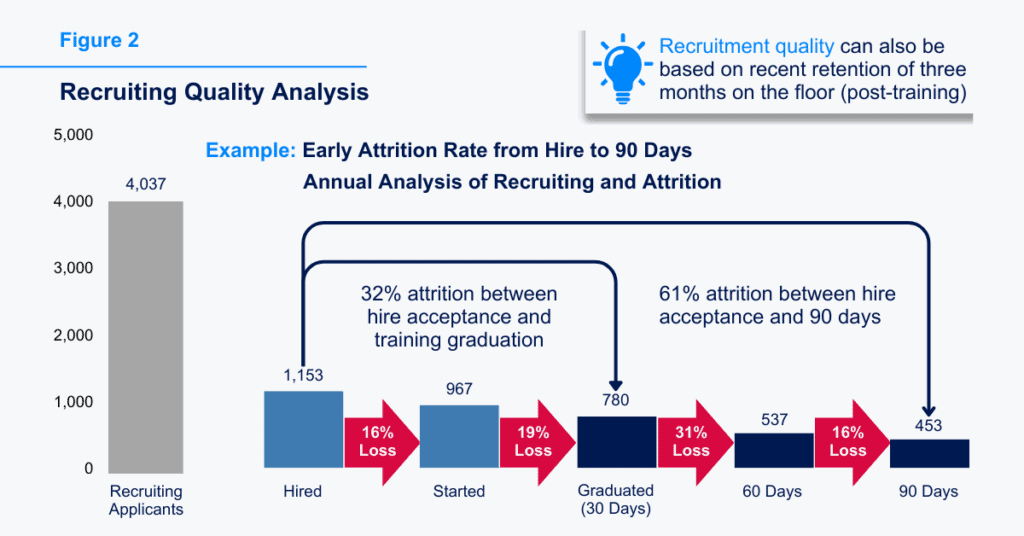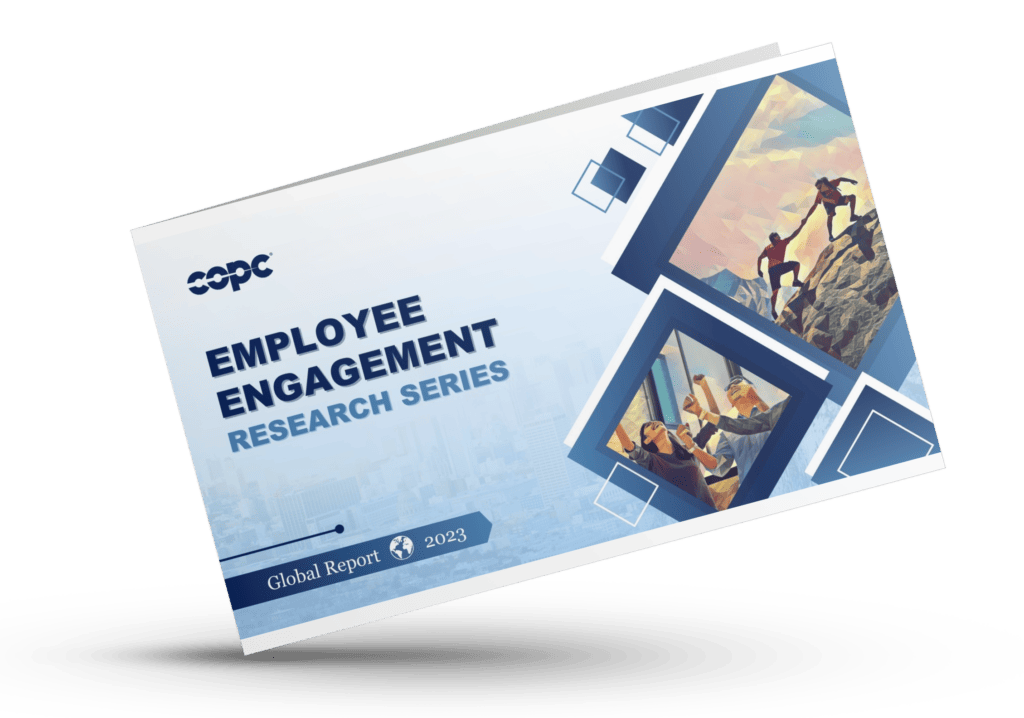
November 15, 2023
Early attrition is a common and expensive problem for contact centers. However, it is possible to cut call center attrition rates and the associated costs. COPC has partnered with Centrical to bring you the Improving Contact Center Retention Series, where we will explore how organizations can reduce early attrition.
This first installment will cover how to create the job description and implement a successful preboarding program. The second article, “Onboarding Best Practices: Reducing Attrition in the First 90 Days” will offer insight and best practices for engaging and retaining new hires.
Concluding the series is the “Leader’s Guide to Call Center Retention,” a comprehensive resource that spans from recruitment and hiring processes to onboarding and the initial 90-day period. The guide will focus on aligning expectations, skills, and engagement for successful call center operations.
Introduction
First-day ghosting (also referred to as “new hire no-shows”) isn’t a novel issue. It is a problem, but not the problem. Rather, it is a symptom of more significant issues and ineffective processes. In this collaboration between Centrical and COPC, we’ll cover why employees ghost and how companies can avoid it.
Before New Hires Apply
The employee journey (and the potential for early attrition) begins during the recruitment process well before the candidate can experience the actual job. Indeed, a prospective employee evaluates a company as their future employer through the recruitment process just as much as an employer evaluates them.
Defining the Job to Avoid Job Shock
Effective recruiting and selection ensure clarity with no surprises. Recruiting and operational groups must thoroughly and accurately define the minimum skills, knowledge and attributes necessary to perform each job. Such clarity informs the job posting with a detailed description and each role’s overarching recruitment and training plan. This precision is critical in frontline customer experience operations where early attrition (within 90 days) is costly in multiple ways.
The COPC Employee Engagement Research Series provides customer experience (CX) leaders with comprehensive insights about contact center staff satisfaction and the drivers of employee engagement.
COPC’s research indicates that organizations need to pay more attention to clearly defining job roles. A clear job definition, contrary to assumptions, is not a standard starting point in the recruitment process.
Twenty-five percent of those surveyed said that they did not agree that the recruitment team accurately described the job. Think about that: one in four say the job described is not the job they are doing.

The prevalence of inaccurate job descriptions is getting worse over time.
As you can see in Figure 1, the number of people who did not agree that the job description was accurate increased from 2021 to 2023, while the number who agreed that the job description was accurate decreased.
Providing an accurate job description can help with early attrition.
The Upside of Agreement on Accuracy
Frontline staff who confirmed receiving accurate job descriptions expressed twice as much job satisfaction compared to those who did not. Additionally, they also exhibited twice the likelihood of retention.
Hiring Requirements
Once you develop the list of the required skills, determine which attributes and competencies you expect potential candidates to have when hired. These expectations will become your list of hiring requirements. Defining your hiring requirements list is essential because it will be used to develop:
- The job posting (with specific requirements)
- A more detailed job description
- A job selection interview guide (for interviewers to use when interviewing) for behaviorally-based items
- Skill verification tests (performed during the recruiting process) that verify the candidate meets the minimum requirements. Skill verification includes tests through interviews, tools or other means, and the passing threshold for each requirement
- An analysis plan for choosing the ideal candidates. Base the selection process design on the full minimum requirements needed. Your analysis plan should be quantified and will lead to decisions based on data instead of a gut feeling, a popular but consistently faulty method.
The Post-Acceptance Logistics and Preboarding Period
Creating a job description and recruiting are just the first steps in the employee journey. The next phase of this journey is the post-acceptance logistics period. During this period, a hand-off usually occurs after the new hire accepts the offer and formal training begins.
This phase is also the “lull” during which new hires wait for the organization to complete logistical tasks, such as background checks and equipment delivery. Or the new hire may be finishing at their old job and waiting for their first day. While this time might seem uneventful, it is a dangerous period with a sky-high risk of early attrition.
Why the Preboarding Period is Dangerous
Your new hire has accepted your offer. But they might not show up. In fact, COPC often finds that customer operations do not report the attrition rate from acceptance to the first day. Here is what it looks like when an organization reports its complete 90-day attrition, including the ghosting attrition.

In Figure 2, the organization hired 1,153 agents, and only 967 showed up for onboarding on day one. That’s a loss of 16% before training begins – a direct result of ineffective recruiting. Here are some common reasons for ghosting attrition:
- There is a lack of communication and engagement between the offer and the first day (beyond HR paperwork).
- New hires might have multiple offers and could choose to go to an organization where they had a better interview and offer/preboarding experience.
- Despite accepting offers, new hires might keep looking for a better commute, higher pay, a more flexible schedule, etc. While recruiting groups have no control over this, an effective selection process would weed out the low-commitment candidates whom the organization should not offer a position.
Recruiting groups will continue to repeat their mistakes if they are not measuring ghosting attrition or requesting feedback from attrited individuals.
Keeping New Hires Engaged Before They Start
Below are a few tips to help keep new hires connected and ensure they clock in on their first day:
Assign an “Onboarding Partner”
An “onboarding partner” can be an HR team member, or perhaps the new hire’s supervisor. Either way, assign someone to engage the new hires during preboarding and establish an open communications channel.
Make Introductions
During preboarding, have the new hire’s supervisor, team, and other key employees/potential mentors send a video introduction. Additionally, encourage the new hire to send their own (optional) video introduction to their new team. While this might seem cumbersome, the Centrical platform enables efficient video sharing.
Start Orientation Early
Keep the new hire engaged (and save time during onboarding) by sending orientation materials before day one. This list should consist of the following:
- Communication that includes a warm welcome and pertinent information such as confirmation of the start date, title, pay scale, and how to check in (remotely or in-person) on their first day
- Paperwork and orientation materials (such as payroll paperwork, benefit materials, and materials covering company policies, procedures, culture and values)
- A list of FAQs and contact details for support channels
Note: When sending payroll information, acknowledgment of policies, and other paperwork that needs a signature, we recommend recognizing and rewarding the new hire’s progress.
An example of a best practice is awarding redeemable points for things like company swag or gift cards for completing these items. Not only are you motivating the new hire, but you are also giving them something to look forward to on their first day.
Set Up the Basics
Set up new hires with system access, email addresses, user IDs, passwords, and access instructions before their first day. While compliance and security concerns can prevent an entire set-up, we recommend providing as much as possible. This further cements the new hire’s feeling of employee engagement and will impress them with your professional approach.
Offer a Tour
Showing new hires around the office in person or virtually helps make the new job “real” and is a genuinely welcoming gesture. It helps new hires feel like they are part of the company. Even new remote-work environments can benefit by adapting to show tours of offices and retail spaces or seeing their onboarding partners set up at home.
Summary and Key Takeaways
We’ve just explored the “why” of early attrition, specifically first-day ghosting and job shock. But these problems don’t exist in a vacuum. Instead, they result from more significant organizational issues, such as ineffective recruiting and communication between offer acceptance and their first day. However, organizations can easily curb this – a few key takeaways:
- The employee journey starts with defining the role and creating an accurate job description. The job description should include the skills, knowledge
,and attributes that a candidate would need to execute the job at a minimum. - One in four frontline employees surveyed by COPC reported that their job description does not match. Misalignment can cause job shock, a major cause of early attrition (within the first 90 days).
- The post-acceptance logistics and preboarding period are dangerous to organizations because they are times of low engagement. During this time, new hires may accept another offer or otherwise decide not to show up on their first day.
- Organizations can decrease the likelihood of first-day ghosting by engaging with the employee during this downtime. Employee engagement should include establishing a point of contact, sending a welcome communication, sharing HR paperwork and orientation materials and setting up the employee with system access. Recognizing achievements during this process through gamification is also helpful.
- As part of preboarding, we also strongly encourage people-centric communications, including introduction videos to their supervisors, teams
,and potential mentors and a virtual or in-person office tour.
The hiring and preboarding processes are just the first step in the employee journey. Stay tuned for our next article, “Onboarding Best Practices: Reducing Attrition in the First 90 Days” where we will discuss how to engage and retain new hires during their first 90 days and beyond.
For over a decade, Centrical has helped the world’s leading contact centers keep employees engaged and retained from preboarding through production. Learn more about Centrical and how our employee performance experience platform can drive impact at your organization.
COPC helps organizations attract and maintain a highly engaged workforce, resulting in less time and money spent on recruitment and training due to lower staff attrition. Learn more about how COPC Inc. Employee Engagement Services can help your organization pinpoint the main factors contributing to employee satisfaction and retention.


